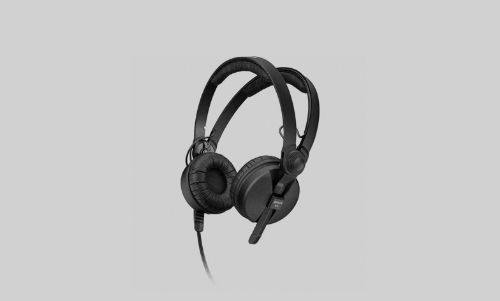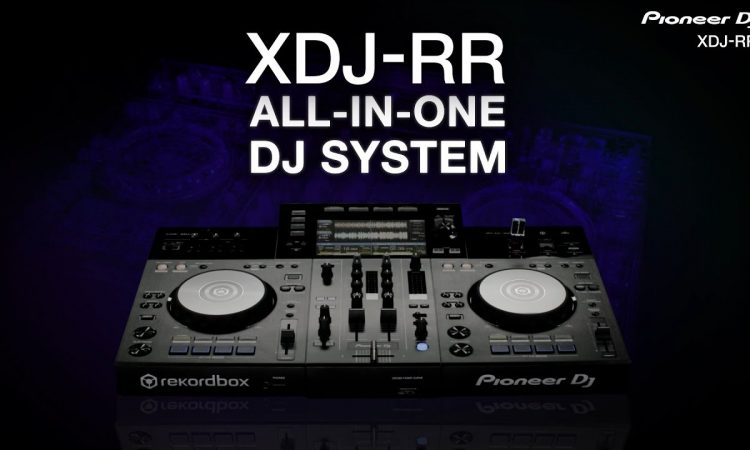The gear featured in the last three parts of this series—Technics 1200 turntables, Pioneer CDJ digital decks and Allen & Heath’s Xone:92 mixer—earned their place in DJ booths for their durability, dependability and feature set. But there was also a need to form a common consensus with each of them: turntables, CD players and mixers are big, heavy and expensive, so having something everyone can agree on permanently installed in the booth is a major advantage.
Finding a standard headphone wouldn’t seem like such a pressing matter. Headphones are the most portable part of a DJ’s standard kit, and they’re likely the cheapest as well. So while DJs might occasionally share with those playing before and after, they tend to bring their own, and some have strong preferences for models that uniquely suit their needs. For disco pioneers like Larry Levan, that meant a lollipop-style headphone with a single cup mounted on a handle. Techno DJs like Donato Dozzy have opted for something larger and more sonically immersive, like Allen & Heath’s Xone:XD-53 headphones. Dixon swears by a pair of audiophile headphones made by Phonon. And Detroit house veteran Terrence Parker has been using a lightly modified rotary-dial telephone handset as a monitor for years.
DJs might prefer the size, feel or sonic character of one pair or another, but they’re all in service of the same task. Headphones let a DJ hear what’s next before it hits the speakers. It could be as simple as that, but most club DJs are also cueing up the next track so it plays in time with the current one—a process better known as beatmatching. Part of beatmatching is physical: DJs must slow down, speed up, scratch over and finely adjust the playback device to line up the beats, assuming they’re not employing a beat sync function (like you’d find on newer CDJs). But it’s also an exercise in listening, where the tempo, texture, melodic content and general compatibility of what’s playing over the system is compared to what’s coming through the headphones.
Using both ears separately is jarring enough, at least when you’re first getting the hang of beatmatching. The nightclub environment, though, brings its own set of complications. The big one is the level of sound coming through the main system. Headphones can compensate by getting louder, but obviously that can strain your hearing. Fit can help, too, providing some much-needed isolation from the main system. And a punchy, defined sound—particularly in the low-end, where the beat’s main pulse lives—will help DJs prepare for the transition amidst a whole lot of background noise.
Overcoming a club’s audio environment isn’t the only hurdle a pair of DJ headphones faces. The scratches, burns and missing knobs you often see on decks and mixers show the beating gear takes, and these pieces of kit don’t even come on the road with the DJ. Headphones are put on and taken off many times throughout the set, stretching the headband and scrunching the soft covering around the cups. Then, at the end of the night, they’re probably wrapped up and tossed into some less than protected pocket of a bag in the rush to the hotel, an afterparty or a flight.
In short, DJs ask a lot of their headphones. So while DJs have more control over this part of their setup than any other, it’s not so surprising that a standard has developed, built upon a reputation not just for weathering the abuse but doing the job exceptionally well regardless of it. That headphone is Sennheiser’s HD 25.
A big part of the HD 25’s charm is that it doesn’t look like it would be up to the task. Many purpose-built DJ headphones are bulky, with cups that fit fully over the ears (“circumaural,” as the design is called in professional terms) and plenty of shiny components. In size and design, they project indestructability, big sound and no expense spared. HD 25s—full name: HD 25-1 II—look frail by comparison, even next to less-than-professional models. They’re composed mostly of plastic and vinyl-covered foam, with smallish, on-ear cups (“supra-aural”) attaching to the neck via popsicle-stick-sized, imminently snappable rods. The cables connections to the cups are external, and the headband has a couple of strange hinges: one lets the left cup swivel forward or backward, and the already skinny band can split into two even skinnier ones. And where lots of DJ headphones seem designed to glint in a nightclub’s flashing lights, the matte-black Sennheisers draw very little attention to themselves. In practically every aspect of its physical presentation, the HD 25 bucks conventional wisdom about how DJ headphones should look and feel.
DJs weren’t originally the HD 25’s target market, though. When Sennheiser—a German company known for mics, aviation headsets and other, mostly professional-grade, audio gear—rolled them out in 1988, they pitched them at the film and TV market, for whom high sound pressure levels and good isolation were key. Despite their spindly look, they were actually comfortable to wear over long periods of time (especially if you split the headband), and the swiveling cup meant broadcasters could hear some of their own unamplified voice. In terms of their sonic character, the HD 25 emphasized accurate reproduction over the pleasing sound you’d get from hi-fi or consumer-oriented models. You might not want to lounge around listening to music through them—they’re a little clinical, at least until you get used to them—but for on-the-job monitoring, they’d quickly become your best friend.
At some point in the ’90s, DJs started to catch on—as it turns out, sound engineers and DJs had similar needs for a loud, accurate, isolating and comfortable monitor. Like the Technics 1200s, which just so happened to perfectly suit the DJs’ needs, HD 25s didn’t need any design changes to capture the market. The exposed wiring and flimsy-seeming cup-headband connection, as it turns out, weren’t signs of weakness; they meant that if a DJ wore out a pad, blew out a driver or otherwise bashed the thing, they could swap them out without having to replace the entire headphone. (The stock main cable—relatively short and stiff, prone to awkward tangles and lower-spec than some other Sennheiser models—would seem to be this headphone’s Achilles heel. DJs will often have them modified with something coiled and heftier.)
Compared to the garishness of stereotypical DJ headphones, the HD 25s actually looked demurely slick. It’s no surprise that in the 2000s, when jocks shunned showy DJ names and “minimal” became dance music’s ultimate buzzword, these nearly unbranded headphones became ubiquitous, and DJs continue to flock to them even as styles have shifted. In a sign of how iconic their headphones have become, Sennheiser started marketing a version of the HD 25 called the Amperior, which adds a smartphone remote to the cable and lowers impedance, making them more friendly to those listening through iPhones instead of Xone:92s. And you couldn’t imagine a newer headphone design like AIAIAI’s minimalist TMA-1 without Sennheiser’s all-black, low-key forebear.
Still, the oversized, sparkling ideal persists in the DJ headphone market, and for many their big, swiveling cups and opulently padded headbands will remain the preference. But the next time you’re unpacking from a party and pull a crunched, knotted-up but completely intact pair of HD 25s from the bowels of your record box, take a moment to marvel at how well these little headphones perform—both in DJ booths and in the long, rough-and-tumble journeys between them.



